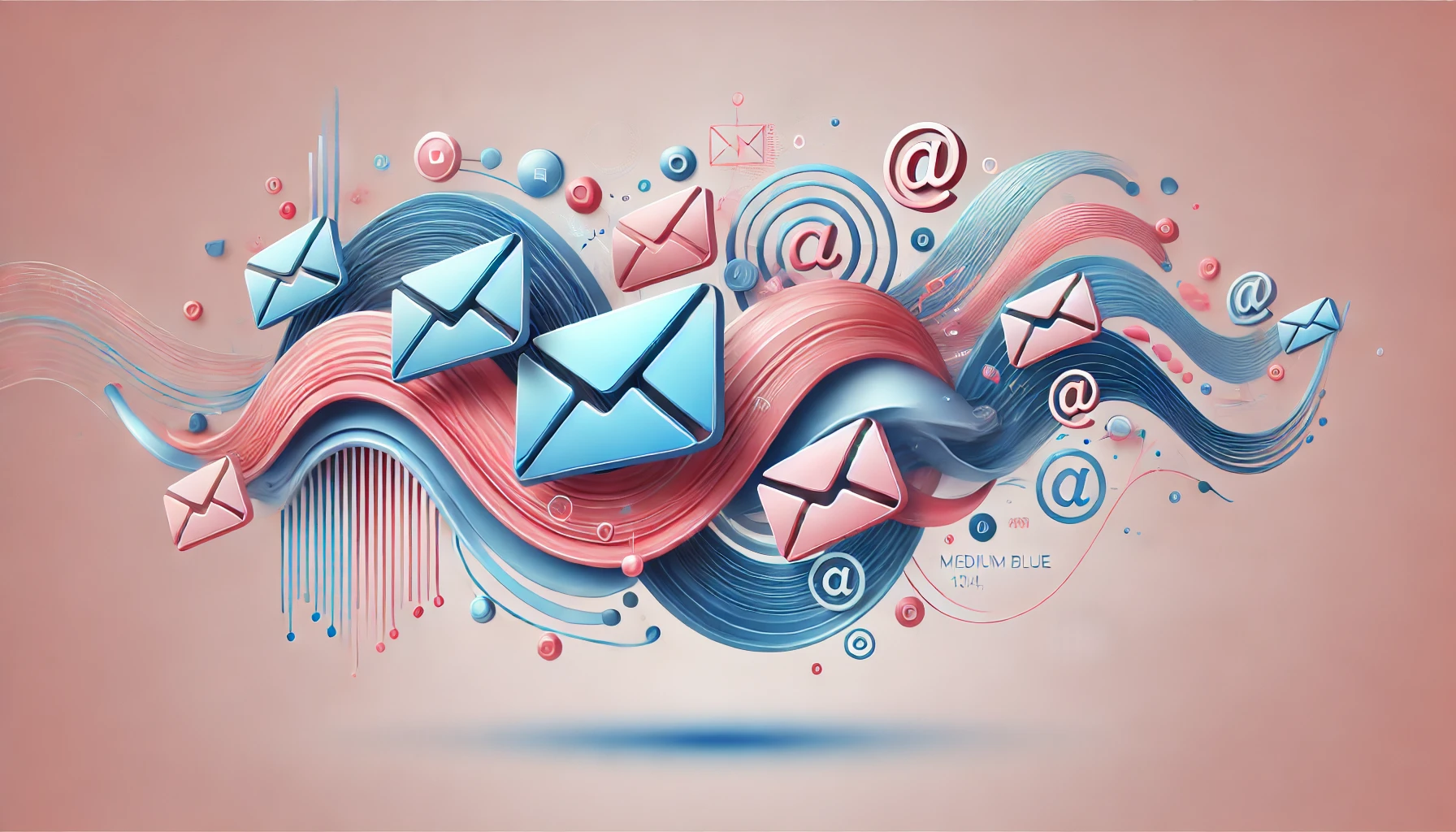Every email subscriber you lose represents more than just a number on a list. It’s a missed opportunity, a disengaged lead, and potentially a lost customer. While unsubscribes are inevitable to some degree, there’s a big difference between natural churn and a wave of people leaving because your emails push them away. Understanding what drives subscribers to hit that dreaded “unsubscribe” link is essential if you want to maintain a healthy, engaged list. Many brands focus on growing their subscriber base without paying equal attention to keeping those subscribers interested. But retention is just as important as acquisition — and, in the long run, it’s more cost-effective.
Below are nine common mistakes that make people tune out and opt out, along with insights into why they happen and how to avoid them. If any of these sound familiar, it might be time to rethink your approach before more valuable subscribers disappear.
1. Sending too many emails too often
Frequency fatigue is real. When people feel overwhelmed by the number of emails they receive from you, they often respond by opting out altogether. It doesn’t matter how valuable the content might be — if your messages feel like a constant intrusion, they’ll be seen as spammy. This happens when brands confuse visibility with presence, believing that more touchpoints automatically lead to more engagement. In reality, over-communication creates the opposite effect. For instance, an online retailer might send multiple promotional emails every single day during a sale period, thinking it will drive urgency, only to notice a spike in unsubscribes instead. The fix isn’t necessarily sending fewer emails but sending them with more intention. Segment your audience so that the people who genuinely want daily updates get them, while others can opt for a weekly or monthly digest.
2. Delivering irrelevant content
Relevance is the backbone of effective email marketing. Subscribers sign up because they expect information that matches their needs, interests, or previous interactions with your brand. When you ignore those expectations and send content that feels generic or unrelated, you create a disconnect. Imagine subscribing to a fitness brand’s newsletter for healthy meal tips, only to receive emails about high-end workout machines you have no interest in buying. That mismatch erodes trust quickly. The reason behind this mistake often lies in weak segmentation or poor data usage. You may have collected valuable subscriber information during sign-up or through previous interactions, but if you’re not using it to personalize messages, the opportunity is wasted. Sending targeted, context-aware emails makes subscribers feel understood, which is the opposite of how they feel when bombarded with irrelevant promotions.
3. Neglecting mobile optimization
A large portion of email opens now happen on mobile devices. If your design or formatting makes it hard to read on a phone, you’ve already lost a chunk of your audience before they even reach your message’s core. This problem often goes unnoticed because many marketers design and preview emails on desktop, forgetting that their subscribers might be reading them while commuting or standing in line at a store. Issues like tiny fonts, broken layouts, or images that take too long to load can be deal-breakers. Poor mobile optimization doesn’t just make the content harder to consume — it signals to subscribers that you haven’t thought about their experience. That frustration can lead to faster unsubscribes. Responsive design, fast-loading images, and concise copy are no longer nice-to-haves; they’re baseline requirements if you want to keep your audience engaged.
4. Ignoring the subscriber journey
When brands treat all subscribers the same, they miss the nuances of where each person is in their journey. Someone who just joined your list might not be ready for heavy sales pitches, while a long-term customer might be more receptive. Failing to acknowledge these differences can make new subscribers feel rushed or existing subscribers feel bored. A SaaS company, for example, might send product update emails to people who haven’t even completed their free trial. That’s a wasted opportunity to guide them through onboarding first. Mapping the subscriber journey and aligning your email content accordingly helps prevent mismatches that cause disengagement. Each touchpoint should be designed to move the subscriber naturally toward the next stage, not push them into something they’re not ready for.
5. Overly aggressive sales tactics
There’s a fine line between creating urgency and creating pressure. When every email you send feels like a hard sell, subscribers eventually push back. Aggressive language, constant discount codes, and endless “last chance” subject lines can make your emails feel manipulative rather than helpful. Even if such tactics generate short-term sales, they often come at the cost of long-term trust. For example, if a brand runs a “final clearance” sale every other month, subscribers quickly realize the urgency is fake. That erodes credibility, and once trust is gone, retention becomes nearly impossible. Instead, balance promotional content with educational, entertaining, or value-driven emails that keep your audience engaged even when they’re not ready to buy.
6. Forgetting to add real value
People stay subscribed when they consistently get something out of your emails — whether it’s useful tips, exclusive insights, or early access to something they care about. The problem arises when brands fall into the trap of sending emails simply to meet a schedule, without considering the value for the recipient. An email that exists only to fill space on your content calendar is easy to spot and even easier to delete. Over time, this leads to apathy, and apathy is one step away from an unsubscribe. A newsletter about photography, for instance, might retain subscribers for years if it offers genuinely helpful tutorials or inspiring examples, but will lose them quickly if it devolves into repetitive product pushes. The most successful email marketers treat every send as an opportunity to strengthen the subscriber relationship, not just occupy inbox space.
7. Making it hard to unsubscribe
While it might seem counterintuitive, making the unsubscribe process overly difficult can backfire. Not only does it frustrate people, but in some regions it can also land you in legal trouble. More importantly, forcing someone to stay on your list rarely turns them into an engaged subscriber — it turns them into someone who ignores or marks your emails as spam. Long unsubscribe forms, hidden links, or requiring multiple steps to confirm the action create unnecessary friction. A clean, visible unsubscribe link shows that you respect your audience’s choice. And in some cases, making it easy to leave can actually boost long-term trust; people are more likely to resubscribe later if they leave on good terms.
8. Ignoring feedback and complaints
Every unsubscribe is a signal, but when subscribers actively leave feedback — through surveys, replies, or social media comments — it’s an even clearer one. Ignoring those signals means missing the chance to fix issues before more people leave. Sometimes the feedback will reveal quick wins, like adjusting send times or improving subject lines. Other times, it may point to deeper strategic problems. Either way, showing that you’re listening can turn dissatisfaction into renewed loyalty. For example, if multiple subscribers say they want fewer emails, consider introducing a preference center where they can choose how often they hear from you. Closing the loop with a follow-up email to let them know their feedback was implemented can rebuild trust that was starting to fade.
💡 Pro Tip: Once you’ve acted on subscriber feedback, turn that goodwill into advocacy. With tools like ReferralCandy, you can invite happy subscribers to share your brand with friends — turning a potential churn risk into a growth opportunity.
9. Delivering a poor first impression
The unsubscribe decision often starts forming from the very first email a subscriber receives. If your welcome email is uninspired, irrelevant, or unclear, you’ve set the tone for a disengaged relationship. A generic “Thanks for subscribing” with no next steps leaves people wondering why they signed up in the first place. In contrast, a welcome email that clearly explains the value of staying subscribed — and delivers something valuable immediately — sets the stage for loyalty. Think of this as your first date with the subscriber: it’s your chance to make them excited about what’s to come. When that opportunity is wasted, recovering their interest becomes much harder, and they’re more likely to leave at the first sign of disappointment.
Final thoughts
Unsubscribes will happen no matter how carefully you craft your emails, but the rate at which they happen is within your control. By recognizing the mistakes that drive people away — from overloading them with irrelevant content to ignoring their feedback — you can make small adjustments that have a big impact on retention. The goal isn’t to keep everyone on your list forever; it’s to keep the right people engaged for as long as possible. Subscribers who stay because they consistently receive value are far more likely to convert, advocate for your brand, and become long-term customers. If your unsubscribe rate feels higher than it should be, review these mistakes and see where you might be slipping. A few focused changes could mean the difference between a shrinking list and a thriving, loyal audience.




